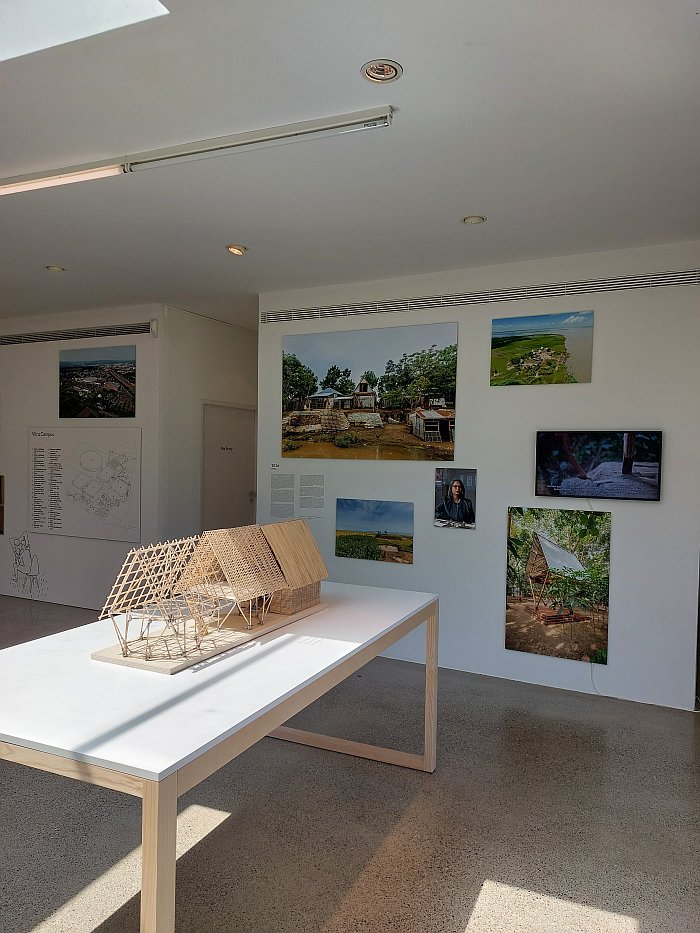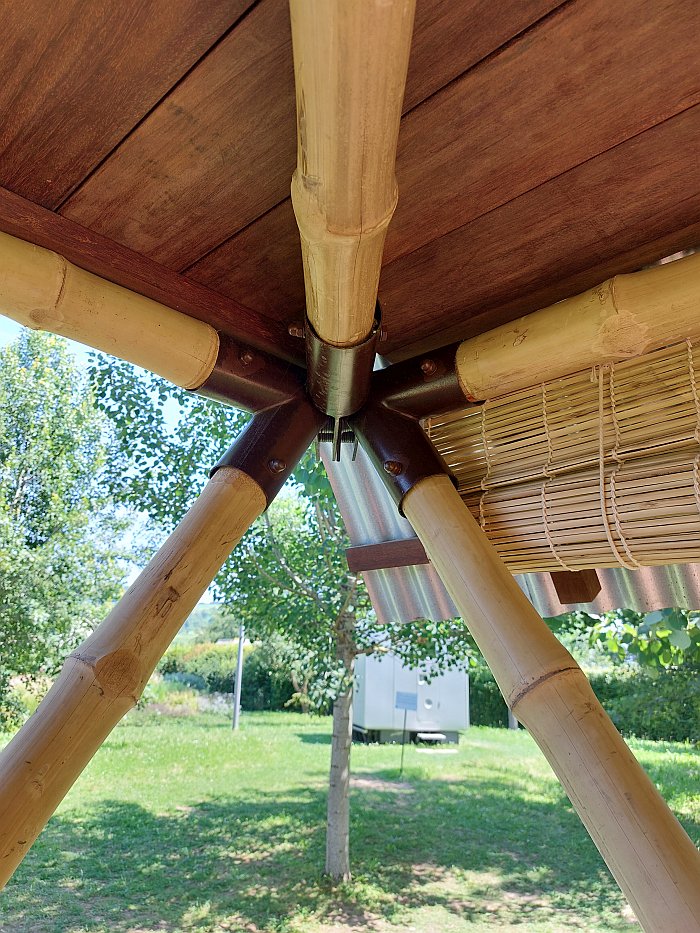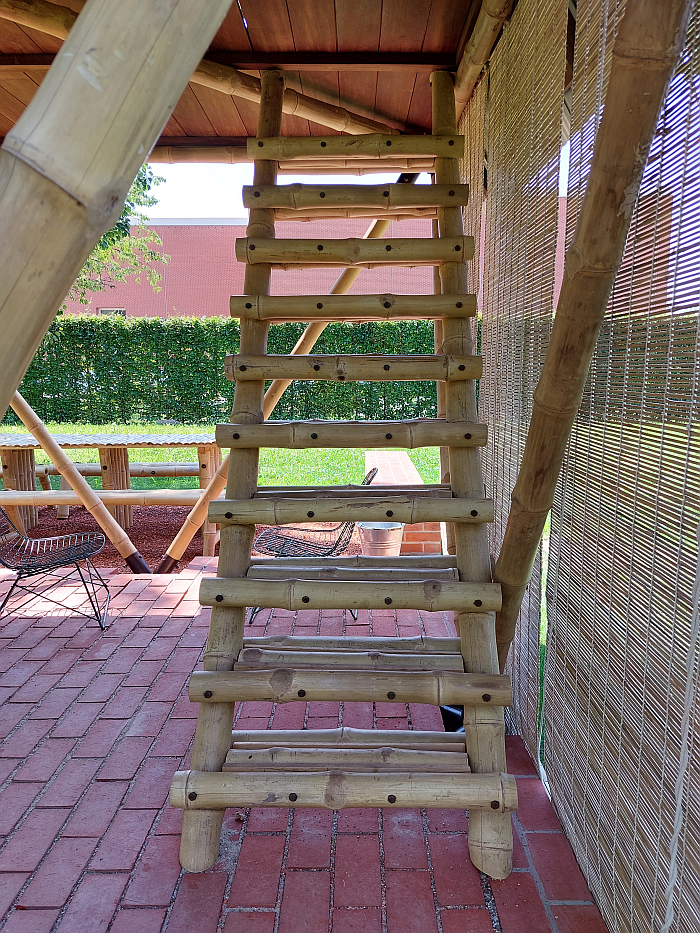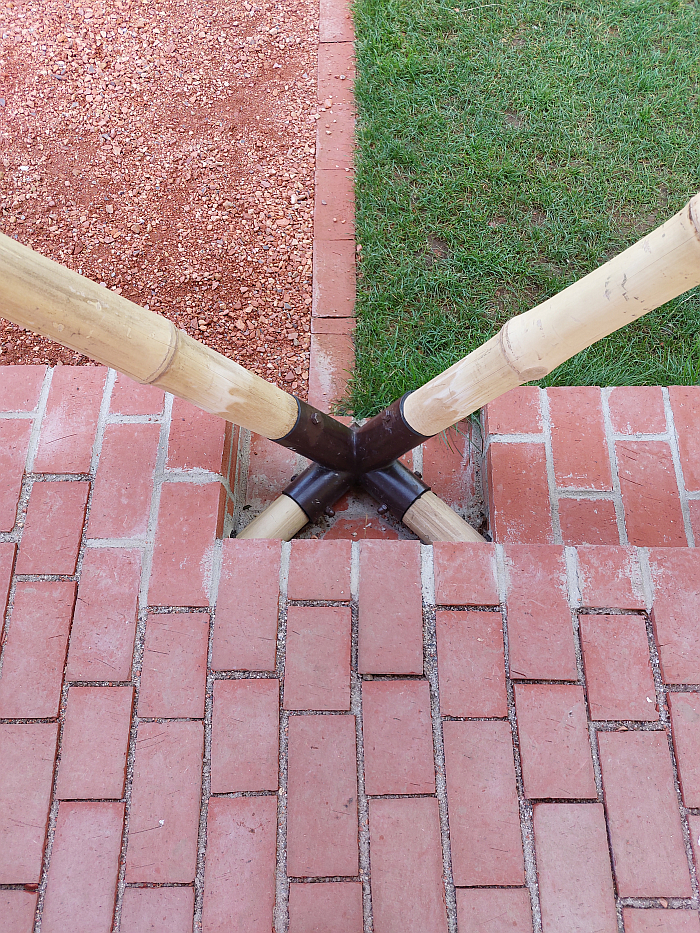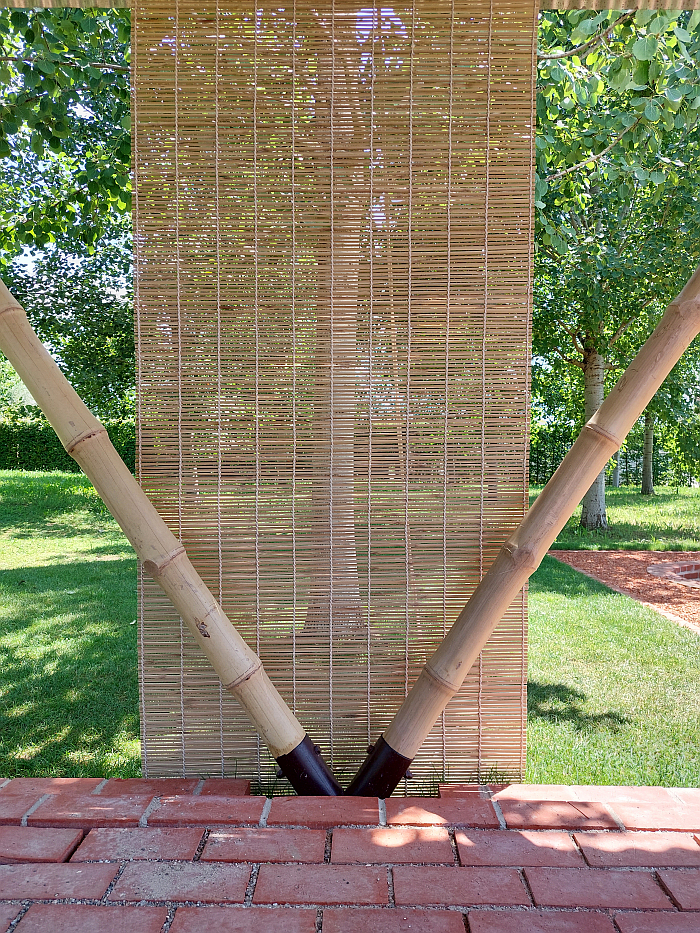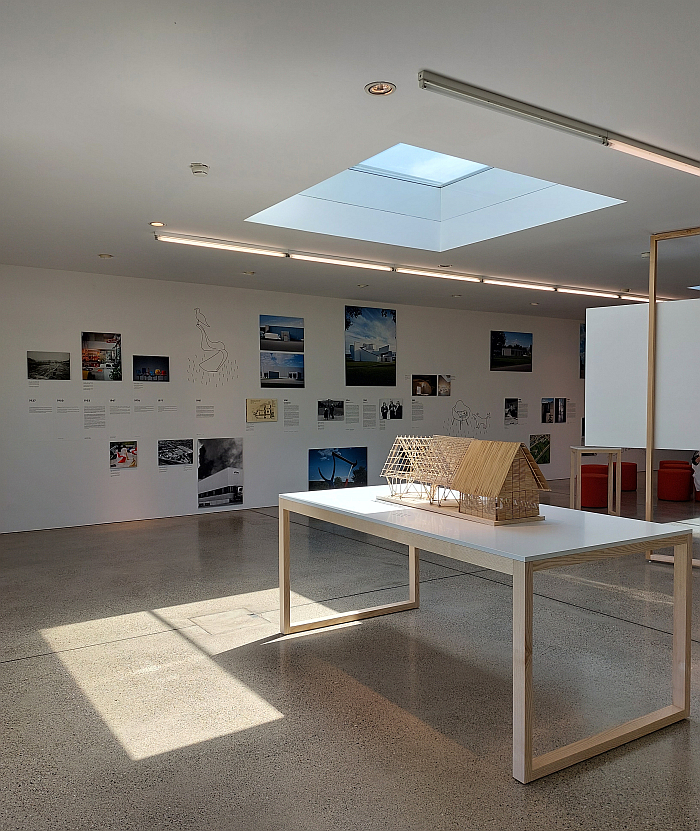The word on the wind was that Tsuyoshi Tane’s Garden House was to be the last addition to the Vitra Campus, Weil am Rhein.
The wind appears to have been ill-informed, thankfully, for with the project Khudi Bari by Marina Tabassum the Vitra Campus has a new addition that expands and extends it more than just physically.......
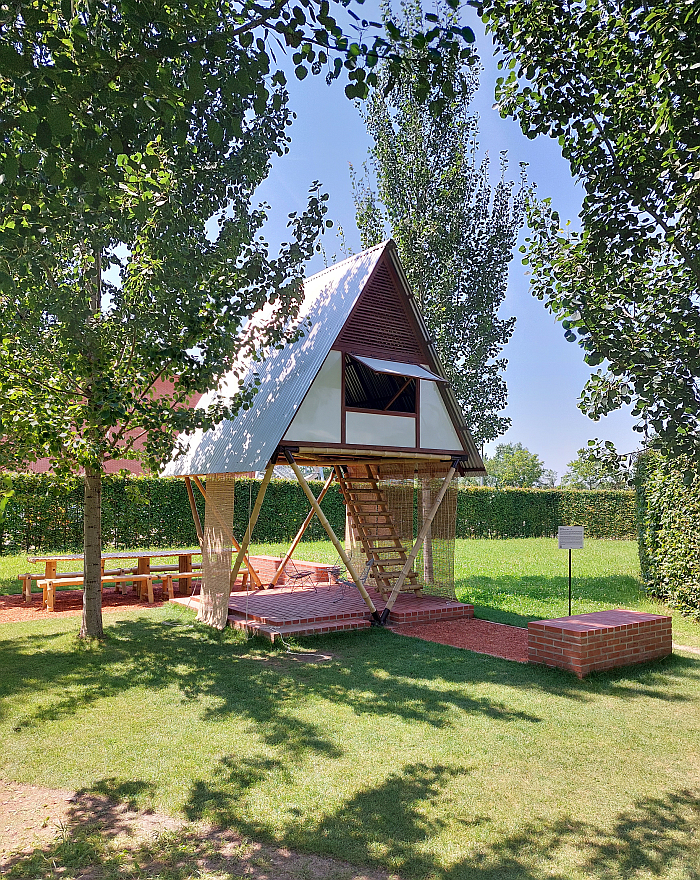
Developed in 2020 by Dhaka, Bangladesh, born and based architect Marina Tabassum as a project for "the marginalized landless population living in the sand beds of river Meghna", Khudi Bari is a modular construction system based around steel and bamboo components that is not only designed to be quick and simple to construct, but to be equally quick and simple to deconstruct, move and reconstruct; a mobility of architecture that the realities of the monsoon floods, fluctuating river courses and disappearing, reappearing, disappearing, reappearing, ad infinitum, ad nauseam land has long demanded in the river deltas that define much of Bangladesh. Natural fragilities and volatilities our contemporary climate emergency are not only making more acute but increasing the regularity of and thus the regularity with which families and communities are required to relocate, thereby demanding more responsive solutions than perhaps have thus far been the case, but solutions which remain sensitive to the needs of the owners.
As a খুদিবাড়ি, a khudi bari, a small house, Khudi Bari's principle defining feature, aside from its use of locally sourced materials, very neatly conceived construction system, and an easy, appealing aesthetic which arises not least from that very neatly conceived construction system and combination of locally sourced natural and engineered materials, is that it is two storey with the primary accommodation on the upper level, thereby providing safety and refuge for people and belongings from the inevitable flood waters until such subside. An example of form following function that also underscores that the easy, appealing aesthetic is of secondary importance, that Khudi Bari isn't about how it looks but about how it works. As indeed should any building. Or product. Or society.
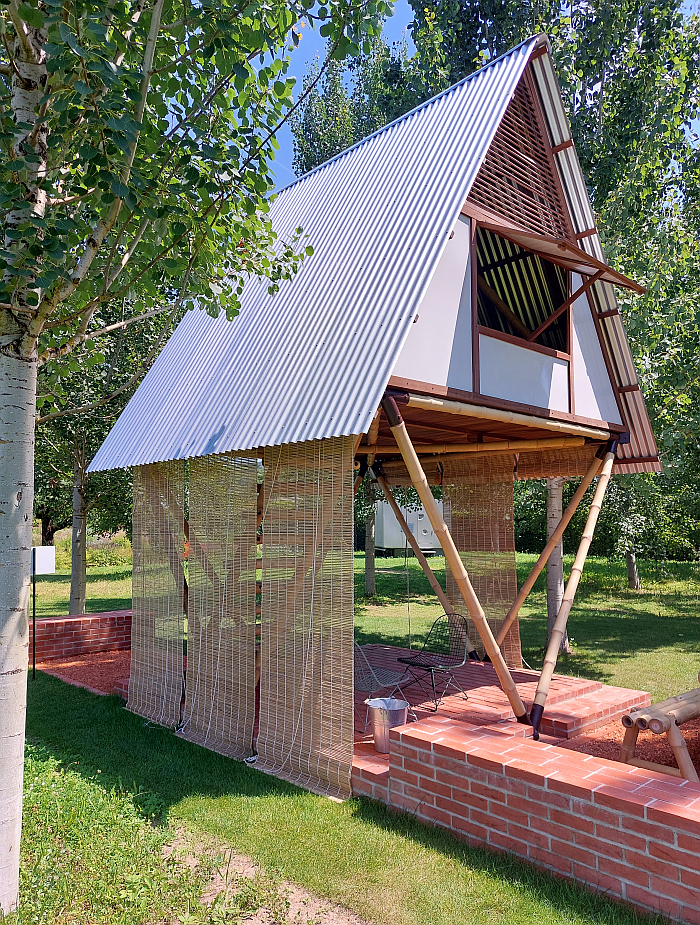
In 2021 the first three Khudi Bari were realised, by the from Tabassum co-initiated Foundation for Architecture and Community Equity, in Chor Hijla a, if we're correctly informed which we might not be, community on an island in the Meghna to the south of Chandpur; a trio of Khudi Bari that as much as they are about providing safe, durable, climate resistant homes for their residents are also very much a field trial, a component of better understanding the realities of Tabassum's theory in actual use by actual people, if the form allows the function, if Khudi Bari works for the owners, and thereby enabling the concept to develop and evolve through practical experience and user initiated adaptations in meaningful directions, a further development of a project in situ that so many architects over the decades have failed to undertake after launching their vision on society, but which is essential to the long-term success of any project; a trio of Khudi Bari which in the near future should be joined by 100 more thanks to financial support from the Swiss Embassy to Bangladesh.
And a trio, and a coming centuria, of Khudi Bari that since the summer of 2024 have been joined by an example on the south-western edge of the Vitra Campus's Oudolf Garden.
A location that for all it is highly unlikely to ever have to face the ravages and challenges and stresses of the Meghna delta and therefore sets Tabassum's Khudi Bari thoroughly out of context, is a most appropriate location providing as it does for a particularly instructive and informative comparison of Khudi Bari with its neighbour, Diogene by Renzo Piano, another interpretation of a খুদিবাড়ি, a khudi bari, a small house, albeit one designed not to provide meaningful, responsive accommodation in context of climate change but as a high-end consumer good for those with an abundance of wealth to spare, designed as a weekend getaway on the edge of a calm, secluded meadow such as the Oudolf Garden... which isn't to criticise Renzo Piano, or Diogene, far from it1, but is to employ the comparison of Diogene and Khudi Bari, to employ the comparison of the motivations, materials, markets of Diogene and Khudi Bari, to employ the comparison of the function and the relationships to their users and to the surrounding community of Diogene and Khudi Bari, as the basis for reflecting on the role of architects and architecture as we move forward through the 21st century, for reflecting on questions of architects' and architecture's responsibilities, on the relationships between architects/architecture and society, on why architects and architecture. On the question if we need more Diogene or more Khudi Bari?
And how do we achieve that which we need, not just in the Meghna delta, but globally?
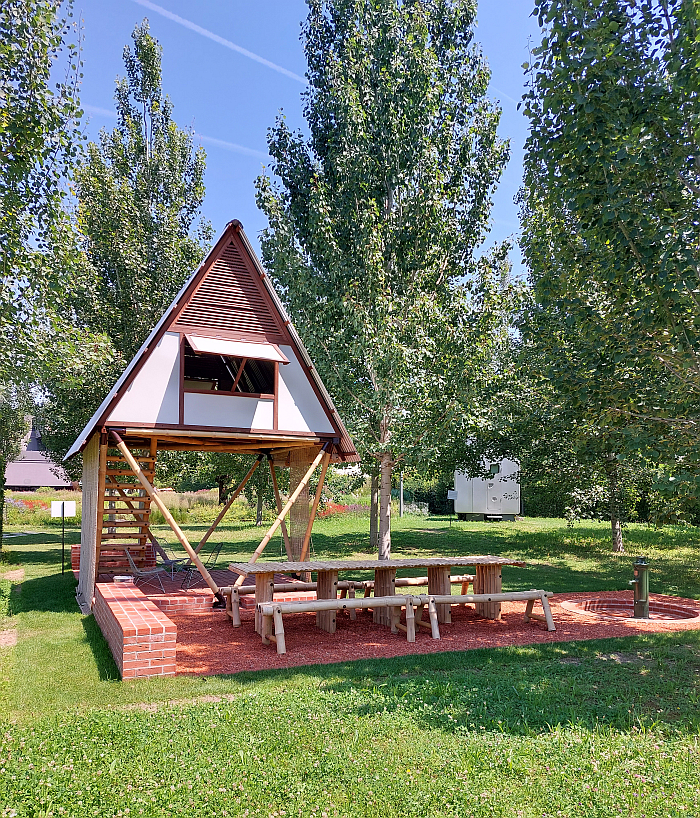
Beyond being the two storey house presented on the Vitra Campus, as a modular construction system Khudi Bari is, as with a Fritz Haller's Mini, Midi, Maxi system, scalable, and Marina Tabassum has also developed, for example, community centres for the Rohingya refugee settlement in Cox's Bazar in south eastern Bangladesh from the concept; a use in refugee settlements that indicates a further potential use of, need for, demand for, such low-cost, lo-tech, local construction principles in context of our contemporary, and invariably future, global realities. And a scaling up of a খুদিবাড়ি, a khudi bari, a small house to a community centre that is a further reinforcement, were it necessary, which we don't believe it is, of the inherent genius of modular systems and of why our focus should be on modular systems in all construction contexts, be that buildings, furniture, lighting, transportation, clothing, society, whatever.
In addition to the opportunity to get up close and personal with Khudi Bari on the Vitra Campus, and to consider it in context of the other architecture on the Campus, in the Vitra Design Museum Gallery there are, or at least were when we there, models explaining the construction principle and photos and a video of Khudi Bari in situ which all allow for deeper insights of the project. A brief presentation of Khudi Bari that is a component of a telling of the (hi)story of the Vitra Campus since 1937; a presentation easily recommendable not only for the introduction it allows to the Vitra Campus and thus the more nuanced approaching of the areal it enables, but also, for all, primarily, on account of a photo from 1989 of long-term Vitra CEO and guiding light Rolf Fehlbaum sporting a sharp suit and an even sharper moustache. As in Smooooth!! There is no point in growing a moustache people, Rolf Fehlbaum owns the moustache. And always will.
And a presentation of the development of the Vitra Campus, an introduction to the (hi)story of the Vitra Campus, that when viewed in context of Khudi Bari, and also of Tsuyoshi Tane’s Garden House, and arguably also the Oudolf Garden, tends to underscore why the Vitra Campus's development shouldn't, mustn't, stop, tends to underscore the Vitra Campus's change of late from a collection of works by architects to a location for, an invitation for, discussions on architecture, architects, society, that the Vitra Campus is slowly taking on a new function, that the Vitra Campus understands the shifts that have occurred since 1937, and since 1989, and since 2013, understands the new contexts in which it exists, that the Vitra Campus understands the conceptual, positional, social, cultural, et al differences between Diogene and Khudi Bari and not only wants to contribute to discourses on such differences, but wants to invite us all to the discussion. Which is very much to be welcomed and encouraged. And accepted as an invitation.
Khudi Bari by Marina Tabassum can be viewed 24/7/365 on the Vitra Campus, Weil am Rhein. Full details can be found at www.vitra.com/campus
1Genuinely isn't, Renzo Piano has proven on innumerable occasions his sensitivity to the demands of the natural world and the needs of communities, has oft reflected on anonymous vernacular as being more valid than academic theory, in his instantaneous response to the collapse of Ponte Morandi in Genoa demonstrated a selflessness of action, we are very much in favour of Renzo Piano. And Diogene is and was designed to be sustainable and responsible and unobtrusive. But Diogene was also designed to be sold as an alternative to a yacht for the wealthiest in society, or an object for those who had a yacht, and a private jet, and still had money they didn't know what to do with. Which while not in itself wrong, does demand to be considered in context of architecture of and for those who not only have no yacht or jet, but no land to build a house. Far less a weekend getaway filled with Vitra furniture. And which when placed in dialogue with a house designed for just such individuals poses very important questions of and for architects and architecture. Without fundamentally questioning Renzo Piano or Diogene.
The presentation in the Vitra Design Museum Gallery may or may not be on when you visit, there was sadly no indication of a run time. See www.design-museum.de for more details.
